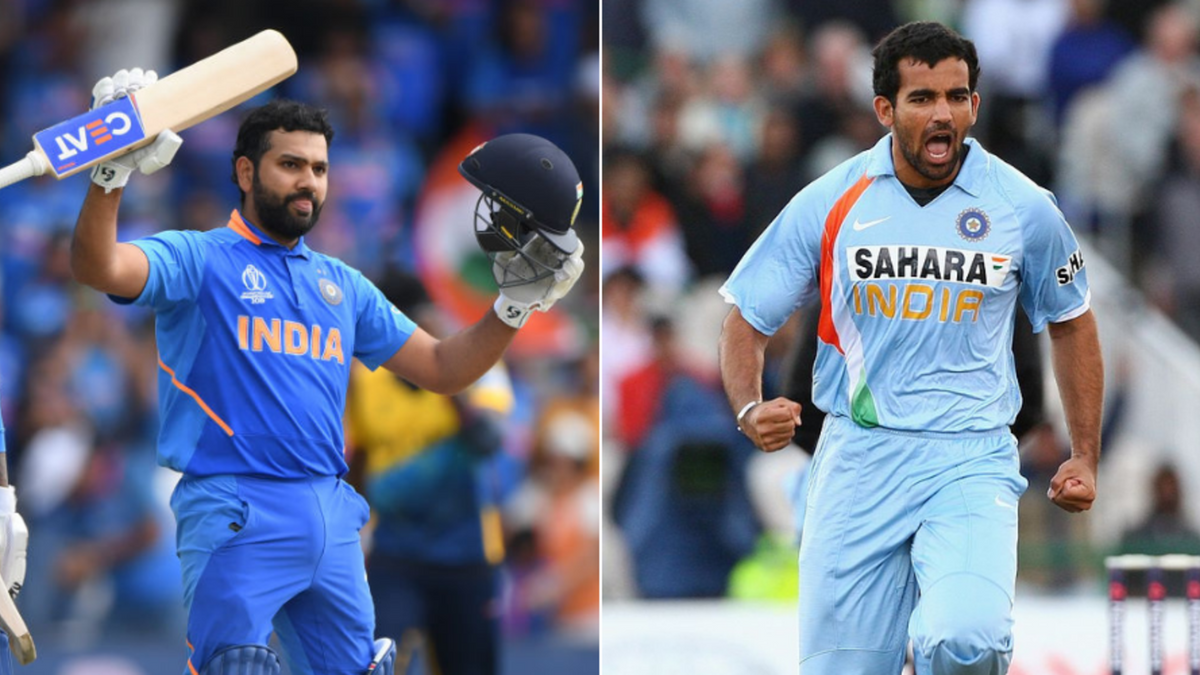
Presenting a combined India ODI XI of the 21st century, made up of players who starred for the team in the format since the start of 2000.
While a few of these players made the cut with ease, it was difficult to leave out some of the other high-profile names, all with the intention of having the best balance in terms of combinations and skillsets.
Statistics mentioned are for India in ODIs since January 1, 2000.
Rohit Sharma
227 ODIs, 9,205 runs @ 48.96, 29 100s, HS: 264, SR: 88.90
Tested in the middle order to start with, Rohit’s batting burst into a different dimension when handed the opener’s role on a permanent basis just under a decade ago, and he has gone on to break record after record. In terms of stature, Rohit has risen above the rest with his unmatched knack for delivering double hundreds. Among all India batters this century, he stands second in the hundreds count.
Sachin Tendulkar
234 ODIs, 9,855 runs @ 46.70, 25 100s, HS: 200*, SR: 85.75
That Tendulkar managed to sustain his excellence over two decades and more speaks volumes of India’s once-in-a-generation cricketer. While he explosively dominated the Nineties, Tendulkar evolved into a crafty, measured run-machine in the 2000s, continuing his excellent run in the fifty-over format. To complete what he began in the 1990s, he struck the format’s first double-hundred in 2010 and clinched a World Cup victory the following year.
Virat Kohli
257 ODIs, 12,285 runs @ 58.77, 43 100s, HS: 183, SR: 92.97
Completing a dream top three is Kohli, the country’s unstoppable run-force of the modern era. The last two years are not a true reflection of his might in the one-day format; only Tendulkar has hit more hundreds in the format and and Kohli remains the fastest to 10,000 ODI runs. At No.3 alone, he has more than 10,000 runs at an average of 62.00.
Yuvraj Singh
301 ODIs, 8,609 runs @ 36.47, 14 100s, HS: 150, SR: 87.43; 110 wickets @ 38.42, BBI: 5-31
A feisty, versatile batter, Yuvraj scored runs in a manner that wasn’t just visually appealing, but also astonishingly impactful. A mighty middle-order match-winner, he was famed for tuning into boundary-hitting mode from the get-go. At four, he could shape the innings as he pleased, often coming even lower down to finish with a splash. An added benefit was his nagging left-arm spin, which grew enough in the later years to elevate him from part-timer to all-rounder.
Suresh Raina
226 ODIs, 5,615 runs @ 35.31, 5 100s, HS: 116*, SR: 93.50
A powerful hitter who could close innings with gusto, Raina was the perfect floater in a line-up stacked with high-class names, fitting where the side required him to. On most days, his late-order cameos would give the innings the perfect boost, but he also had it in him to rise to higher levels with game-defining solo acts. One of many useful part-time spin options, he was also one of India’s finest fielders.
MS Dhoni
347 ODIs, 10,559 runs @ 50.23, 9 100s, HS: 183*, SR: 87.13
A generation-defining leader, a champion wicketkeeper and a revolutionary batter, Dhoni combined all into one glittery package. One of only two wicketkeepers with more than 10,000 ODI runs, Dhoni developed his pinch-hitting into world-class finishing, becoming the team’s inspiring figurehead. At No.6, he’s scored more ODI runs than anyone.
Ravindra Jadeja
168 ODIs, 188 wickets @ 37.36, 1 five-for, BBI: 5-36, ER: 4.92; 2,411 runs @ 32.58, HS: 87, SR: 87.07
There have been better middle-order batters, and there have been more prolific spinners, but few are able to combine the two facets like Jadeja. At No.7, he can stir up a storm with his range of strokes; with the ball, he can tirelessly gnaw at batting line-ups with his clever variations. Add to that his exceptional fielding and you have a multi-dimensional player like few others.
Harbhajan Singh
221 ODIs, 247 wickets @ 33.93, 3 five-for, BBI: 5-31, ER: 4.30
His career tailed off at the end, but Harbhajan was a potent force throughout the 2000s, ending with the most wickets by an India ODI spinner this century. A wicket-taking weapon to begin with, Harbhajan transitioned with the game’s changing demands, and became a run-stopping enforcer as the years progressed. Among off-spinners, only Muttiah Muralitharan has taken more ODI wickets this century.
Zaheer Khan
194 ODIs, 269 wickets @ 30.11, 1 five-for, BBI: 5-42, ER: 4.95
The spearhead of India’s pace attack for several years, Zaheer began as an explosive quick before losing speed to injury. What came along was precision and control, with variations to boot, making him one of India’s finest white-ball exponents. At the 2011 World Cup, he was the joint-highest wicket-taker.
Mohammed Shami
79 ODIs, 148 wickets @ 25.62, 1 five-for, BBI: 5-69, ER: 5.62
Combining swing and control while consistently hitting the right spots, Shami has been an integral part of India’s pace revolution, redefining his own role over the years. Initially a hit-the-deck-hard bowler, he rebranded himself to add more pace changes, playing with angles and variations, while also delivering near-perfect yorkers. He has a World Cup hat-trick to his name and is closing in on 150 wickets.
Jasprit Bumrah
70 ODIs, 113 wickets @ 25.42, 1 five-for, BBI: 5-27, ER: 4.65
In just over half a decade, Bumrah has ascended into all-time great levels with his immensely fluid bowling, both with the new ball and at the death. Operating with his gangly, unconventional action, Bumrah has risen up the ranks like few others have, displaying remarkable control over his lines. Armed with a vicious yorker and a deceptive bouncer as well, Bumrah really has a bag full of tricks.








